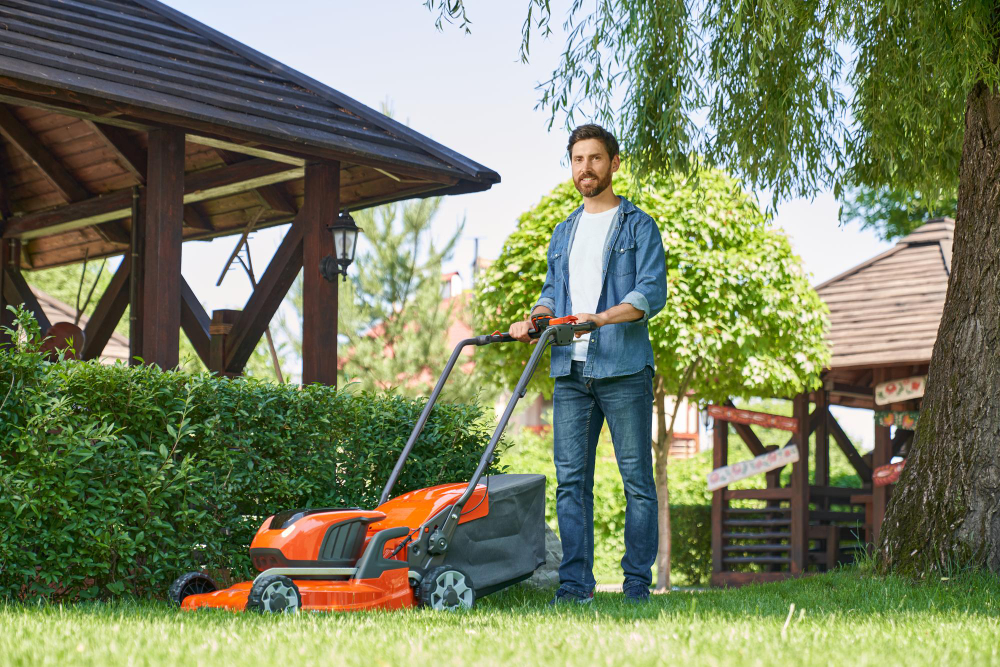As the warm weather sets in, many homeowners eagerly tackle various yard work tasks to keep their outdoor spaces looking neat and beautiful. From mowing the lawn to pruning shrubs, gardening, and raking leaves, these activities often involve repetitive motions, heavy lifting, and prolonged periods of physical exertion. While the satisfaction of a well-maintained yard is undeniable, the risk of muscle injuries lurks beneath the surface.
Muscle strains, sprains, and overuse injuries are common occurrences during yard work, especially if proper precautions are not taken. The combination of unfamiliar movements, improper techniques, and the sheer physical demands of these tasks can take a toll on our bodies, leading to discomfort, pain, and even long-term consequences if left unaddressed.
Fortunately, with the right preventive measures and the guidance of a skilled physiotherapist, muscle injuries from yard work can be effectively avoided or minimized.
Common Yard Work Activities and Associated Muscle Injuries:
Yard work may seem like a simple and enjoyable outdoor activity, but it often involves physically demanding tasks that can take a toll on our bodies if proper precautions are not taken. From mowing the lawn to raking leaves, gardening, and trimming shrubs, these common yard chores engage various muscle groups and require repetitive motions, heavy lifting, and prolonged physical exertion. As a result, many people experience muscle strains, sprains, and overuse injuries affecting areas such as the back, shoulders, arms, wrists, and knees.
Understanding the specific yard work activities that contribute to these injuries is crucial for implementing effective prevention and recovery strategies.
- Associated Muscle Injuries with Mowing the Lawn
- Repetitive pushing and pulling motions can strain back muscles
- Twisting and bending to maneuver the lawnmower can lead to shoulder and arm injuries
- Associated Muscle Injuries with Raking and Shoveling
- Prolonged raking puts stress on the back, shoulders, and arms
- Improper lifting and shoveling techniques can cause back strains and herniated discs
- Associated Muscle Injuries with Gardening and Planting
- Excessive kneeling or squatting can lead to knee pain and inflammation
- Digging, lifting, and carrying can strain the back muscles
- Repetitive motions like weeding or pruning can cause wrist tendonitis
- Associated Muscle Injuries with Trimming and Pruning
- Overhead reaching and lifting can strain the shoulder muscles
- Gripping and operating power tools can lead to hand, wrist, and arm injuries

Preventive Measures:
While yard work can be physically demanding, there are several preventive measures that can be taken to minimize the risk of muscle injuries.
- Warm-up exercises and stretching
- Dynamic stretches to improve range of motion and flexibility
- Targeted exercises to activate and warm up the muscles used in yard work
- Proper body mechanics and posture
- Maintaining good posture while performing tasks
- Using the leg muscles to lift, rather than the back
- Avoiding excessive twisting or reaching
- Using ergonomic tools and equipment
- Lightweight, well-designed tools that reduce strain on the body
- Adjustable handles and grips to maintain a neutral wrist position
- Taking breaks and staying hydrated
- Scheduling regular rest periods to allow muscles to recover
- Drinking plenty of water to prevent fatigue and muscle cramps
By implementing these preventive measures, individuals can approach yard work with greater confidence and reduce their chances of sustaining painful and debilitating muscle injuries.
The Role of Physiotherapy to Prevent and Alleviate Muscle Pain Due to Yard Work
While preventive measures and proper technique are crucial for reducing muscle injuries during yard work, seeking guidance from a physiotherapist can provide an added layer of protection and support.
- Pre-season conditioning and strengthening
- Developing a customized exercise program to build strength and endurance
- Identifying and addressing muscle imbalances or weaknesses
- Assessing and correcting muscle imbalances
- Conducting a comprehensive assessment to identify areas of tightness or weakness
- Providing targeted exercises and stretches to restore balance and alignment
- Developing personalized exercise programs
- Tailoring exercises to the individual’s specific needs and yard work demands
- Incorporating functional movements and resistance training
- Educating on proper techniques and injury prevention
- Teaching correct body mechanics for various yard work tasks
- Providing guidance on ergonomic principles and tool usage
Additionally, their knowledge of injury prevention strategies and rehabilitation techniques can aid in both preparing the body for the demands of outdoor labor and facilitating a quicker recovery in the event of an injury.

Benefits of Physiotherapy for Yard Work Injuries:
- Pain management
- Physiotherapy offers various techniques to reduce both acute and chronic pain associated with yard work injuries.
- Methods may include manual therapy, electrotherapy (e.g., TENS), and therapeutic exercises.
- These approaches often reduce the need for pain medications, minimizing potential side effects.
- Improved mobility and flexibility
- Physiotherapists design stretching routines to restore range of motion in affected joints and muscles.
- Techniques like proprioceptive neuromuscular facilitation (PNF) can be particularly effective for improving flexibility.
- Increased mobility helps patients return to yard work activities more comfortably and efficiently.
- Posture correction
- Physiotherapists identify and address postural issues that may have contributed to the injury.
- They provide guidance on maintaining proper posture during various yard work activities.
- Exercises to strengthen postural muscles are often incorporated into treatment plans.
- Faster recovery and return to activities
- Physiotherapy can accelerate healing processes through improved blood flow and tissue repair.
- Therapists guide patients through a gradual return to yard work, ensuring activities are resumed safely.
- Long-term benefits
- Regular physiotherapy can reduce the risk of developing chronic conditions related to yard work injuries.
- Overall physical fitness improvements often extend beyond just injury recovery.
In essence, physiotherapy not only aids in recovery from yard work injuries but also promotes long-term musculoskeletal health and overall well-being. It offers a sustainable solution that enables individuals to maintain their gardens and landscapes while prioritizing their physical health.
Find the Physiotherapy Clinic Near You
If you’re a homeowner or gardening enthusiast in Milton or Pickering, Ontario, physiotherapy offers invaluable benefits for treating and preventing yard work injuries. At Pro Fusion Rehab, our experienced physiotherapists understand the unique challenges that come with maintaining lawns and gardens.
Our comprehensive approach combines pain management, targeted exercises, and hands-on therapy to address common injuries like back strain, tendonitis, and sprains that often result from yard work. We’ve helped countless Pickering and Milton residents recover faster and get back to tending their beautiful gardens and landscapes.
To learn how our physiotherapy services can help you maintain a beautiful yard without compromising your health. Call us today to schedule an appointment and take the first step towards pain-free gardening in Pickering or Milton, Ontario.
References:
- American Physical Therapy Association. (2021). “Gardening.”
- Canadian Physiotherapy Association. (2022). “Gardening: Safety Tips to Prevent Injury.”
- Lim, E. C., & Poh, R. L. (2017). “Gardening health and safety tips.” Singapore Medical Journal, 58(2), 84-85.
- Arthritis Foundation. (n.d.). “Gardening with Arthritis: Tips for Preventing Joint Pain.”
- NHS. (2021). “Common posture mistakes and fixes.”
